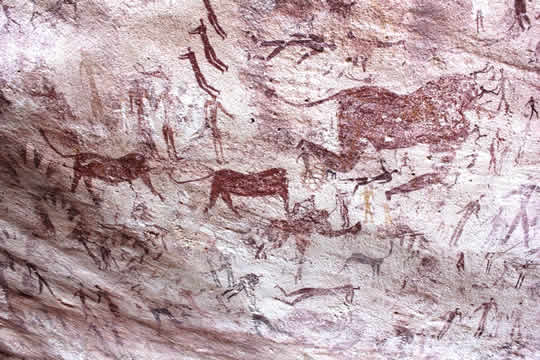

The Pack contains associated resources for the learning experience, typically in the form of articles and videos. There is a teacher Pack (with only teacher information) and a student Pack (which contains only student information). As a teacher, you can toggle between both to see everything.
Here are the teacher pack items for Emergence and Migrations of Early Humans:


Overview In this experience, students encounter the early peoples of the Paleolithic Era. They locate the physical geography of several places where prehistoric modern humans lived. Next, they explore major Paleolithic cultural developments such as language, art, and religion. They learn how archaeologists work to find evidence of prehistoric people. Finally, students investigate how early peoples’ adaptations to their environment enabled their survival, particularly during the Ice Age. Objectives
The first modern humans arose in East Africa more than 100,000 years ago. In this experience, you will learn where and how those early peoples lived.
Objectives

Look at the image of the cave painting above. What do you see? In a short phrase, share an idea with your classmates. To list more than one, separate your ideas with a comma, like this: Rome, Paris
The world’s first artists lived long before there were farming, writing, or cities. Paintings and drawings like the one above have been found in caves and on rocks in Europe, Asia, Africa, and the Americas. Often, these artists painted the animals that they saw around them. They painted predators and prey. Also, they made prints of their own hands. Perhaps the handprints were like signatures!
To see more photos of cave art and learn how they were made, read
Based on what you have learned, what is a question you have about the earliest humans?

